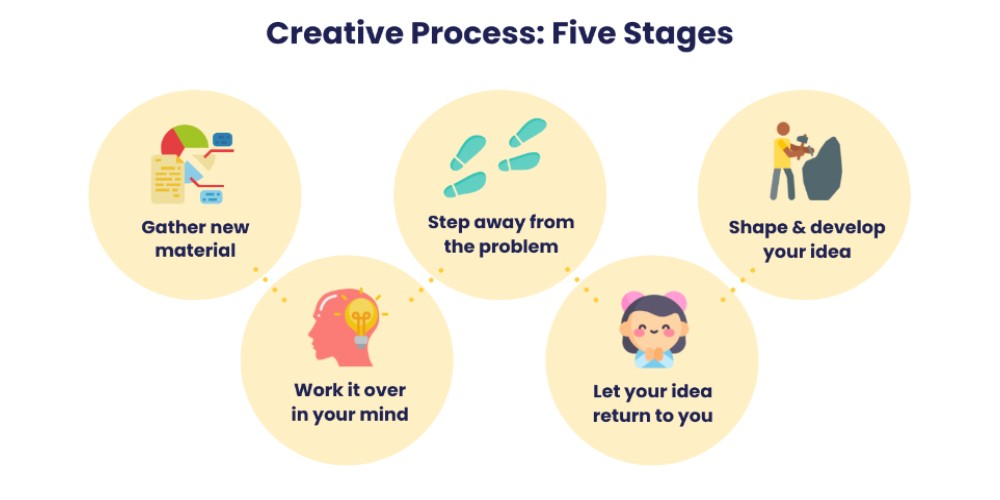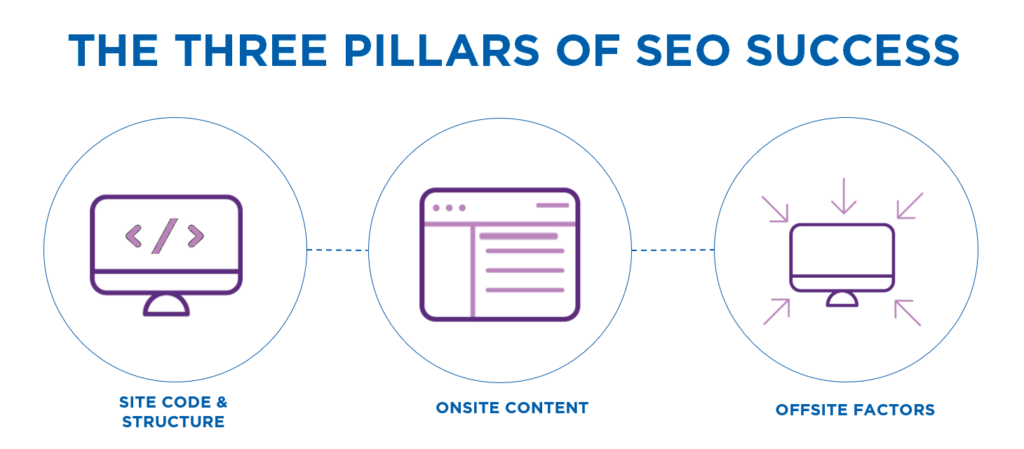
Before we get into the rules for content writing, it’s imperative to fully understand the role content plays in the modern-day marketing mix. Many wise marketers use content marketing as their salesforce; good content helps engage the target audience and build long-term relationships and loyalty.
According to a case study by Marketing Insider Group, French IT conglomerate Capgemini was able to use content marketing to generate over 20 million dollars in revenue in just a year.
Content marketing is easier said than done, mainly because the audience and platforms keep evolving. Therefore, following specific content rules is imperative to achieve your business goals. Considering the plethora of content on the internet, marketers must follow some content writing guidelines to grab their readers’ attention.
7 Content Writing Rules for Digital Mad Men
1. Research
Follow a strict research process before you even begin writing or strategizing your content. Marketers often ignore the importance of research, thinking that the quantity of the content will make up for the quality. Here are a few things you should research before starting your content marketing activities.
- Target audience
- Competition
- Your previous content marketing strategies
- A domain that you want to talk about
- Identifying key opinion leaders and authorities in that domain

It is crucial for you as a marketer to provide something of value to your audience via your content. Marketers often make the mistake of not conducting in-depth research on the topic they are writing about and may end up with content that isn’t much different from one that the target audience already knows.
2. Be precise
It is now said that the human being’s average attention span is even lesser than that of a goldfish (15 seconds). Thus it is even more difficult for marketers to create content that can hold their audience’s attention.
When your target group lands on your pieces of content, they are looking for something specific. Your content must be precise and clear enough for them to understand and consume. While it is important to follow SEO writing guidelines, it cannot come at the cost of quality.
3. Let the creative juices flow.
Irrespective of whether you are in a B2B or B2C business, creativity can take your content far. A quick Google search on the type of content you are looking to create will give you an overview of what your competition is doing and what you need to do to break the monotony.

Creative content has a longer shelf life as it is likely to be shared organically by your target group. Spotify’s yearly Wrapped App is an excellent example of creativity in content marketing.
By marrying data with creativity, Spotify gives its users a macro-level overview of their music listening habits (refer to the image below). Moreover, by making the content shareable across social media platforms, Spotify ensures that its content is distributed well organically.

Here are some rules for content writing to improve your content’s creativity:
- Use high-quality images
- Invest in video content
- Tie up with content creators/bloggers
- Identify whitespaces left by your competition
4. Address the problem
Let’s assume that you own an e-commerce store with a wide variety of products in the sports shoe category. Using content marketing, you can educate users on the best shoes suited for them based on their physical activity. Using formats such as short, dynamic questionnaires can help you personalize your content. Personalization and contextual content help build relevancy and establish authority in the consumers’ minds.
5. Don’t forget SEO
Imagine spending countless hours on research, strategy, and execution without getting any sizable readership. That’s where Search Engine Optimization (SEO) comes in. Optimizing your content for SEO is one of the most important content writing rules that you as a marketer should know.

While SEO in itself can be a separate topic for a blog, here are some general SEO content writing guidelines that one must follow:
- Research and target multiple keywords
- Format your content (use titles, paragraphs, and subparagraphs)
- Identify search intent
- Optimize meta titles and meta descriptions
- Keep your headlines short and crisp
- Prioritize link building
- Add images and pictures
- Keep the content relevant to a search query
You can check out these tips on how to write SEO-friendly blogs.
6. Distribution
Many marketers completely ignore distribution after they have uploaded their content. Listing your content on your website, channel, or social media account is not enough; you need to cross-promote your content across different channels to gain more visibility.
Imagine posting four blogs per week on your website with an average audience size of 10k visitors per blog. That’s 40K visitors per week reading your content; this might be satisfying your weekly KPIs, but there is still room to grow.

Are you promoting your blogs on social media? Do you convert your blogs into a weekly newsletter and mail it to your subscriber’s list? Is some other website featuring your content/articles?
These are just some of the questions that you as a content marketer must ask. Distribution ensures that your content gets seen and recognized. Since you are in charge of distribution, you have the power to decide where your brand and content are visible. Here are some of the content distribution channels that you must explore.
- Social media
- Cross-promotion via emailers/newsletters
- Tie-ups with influencers and thought leaders
- Third-party tie-ups and integrations
- Paid advertising (Search Engine Marketing)
7. Measure
Last but not least, measurement and KPIs are essential elements of content marketing. As marketers and content writers, we spend a lot of our time and energy creating content for our brands and ourselves.
We must regularly measure how our content strategy works to understand if what we are doing is right or wrong. There is no single KPI that is relevant across different content types. KPIs change according to the business or marketing objective of the content.
Here is a summary of some relevant KPIs across different content types.

The Final Word
The rules for content writing mentioned above are not fixed. But if you follow them, you will see that your content – whether it is blog posts, web content, or social media – will start performing and bring in the desired results.
Now that you have understood the basics of content writing rules, it’s time to put them into practice and achieve your business/personal brand goals.
Key Takeaways
- Be sincere with your research. Before starting with your content, conduct thorough research on the topic, you want to cover.
- Be clear with what you want to convey. Don’t beat around the bush, but at the same time, try not to let your content become a hard sell; the key here is to strike a perfect balance.
- Be creative with your execution. Use different content formats such as videos, gifs, and images to bring the picture to life.
- Ensure that your content addresses what your audience is looking for; it is imperative that your content marketing addresses the need gap of your target group.
- Content marketing without adhering to SEO is like riding a superbike without fuel.
- Leverage different channels to distribute your content; distribution is as important as content creation.
- Set hard KPIs for your content marketing strategy and keep measuring them periodically. A monthly or quarterly review of your content marketing strategy is generally a good practice.

FAQs
Pick a topic that you feel passionate about. Create a calendar and start following it. Practice writing each day and publish your work on a blog or third-party website. Keep practicing until you master the art of content writing.
There are many types of content such as blogs, articles, newsletters, videos, images, sketches, etc. Pick a type that you feel works best for your brand or business. Diversify your content type to clear the clutter.
There are several KPIs that can help you measure your content marketing performance. Select your KPIs depending on your business and marketing objectives. Many third-party tools can help you measure the performance of your content.
Content guidelines are nothing but your own content writing rules that you as a marketer/content creator set for yourself or your team. Guidelines could be anything from the overall tonality to follow, length and format of the content, language to be used, words to avoid, etc. Guidelines help you or your team maintain uniformity across the board.
Latest Blogs
Explore how Google’s 2025 AI search updates triggered ranking chaos. Learn actionable strategies to adapt your SEO for AI Overviews, zero-click searches, and SERP volatility. Stay ahead now.
Learn how to rank on AI search engines like ChatGPT, Perplexity, and Gemini by optimizing your content for authority, structure, and relevance. Stay ahead in AI-driven search with this strategic guide.
Explore the best healthcare SEO services for your medical practice. Improve online visibility and effectively reach more patients in need of your services.
Get your hands on the latest news!
Similar Posts

B2C Marketing
5 mins read
Top Choices for Best Content Marketing Services in B2B Industries

Artificial Intelligence
5 mins read
How A Lead Generation Specialist Can Use AI-Powered Content Funnels to Drive Conversions

Artificial Intelligence
4 mins read